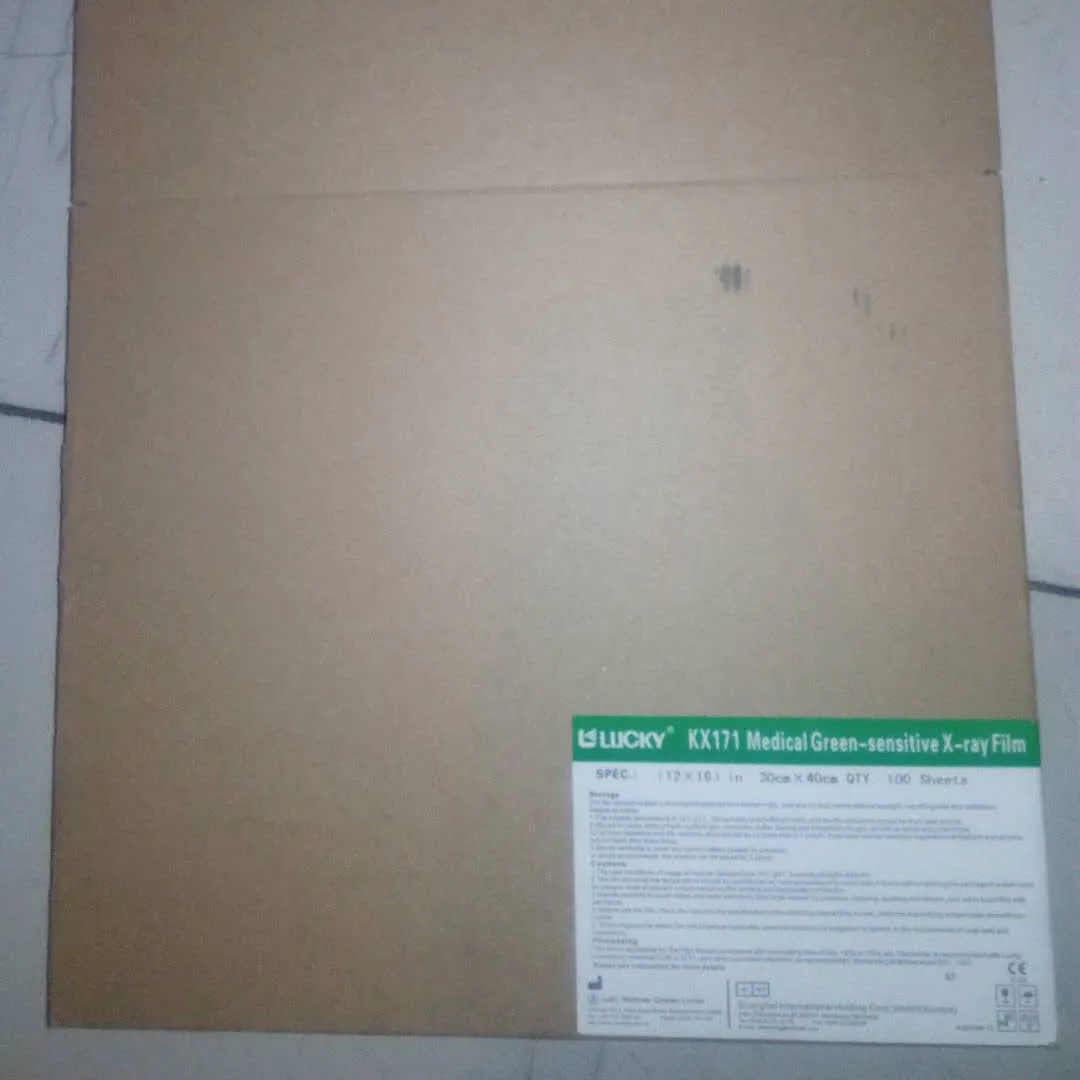



(intra oral x ray film packet)
The intra oral x ray film packet
is a fundamental element of dental diagnostics, making it essential for practitioners who wish to ensure precise, reliable imaging results for their patients. Evolving over decades, intra oral x ray film combines technology, sensitive materials, and safety features that clinicians count on for daily use. As dental healthcare continues to prioritize early diagnosis and improved treatment planning, the dental x ray film packet remains at the core of accurate oral assessments. This article delves into the intricate features, comparative manufacturing standards, and versatile applications of intra oral x ray film, equipping professionals with comprehensive insights to make informed choices for their clinics.
In recent years, the intra oral x ray film packet has undergone significant technological refinement. Modern x ray films are engineered with ultra-thin PET base materials, double-emulsion coatings, and advanced lead foil barriers—delivering both radiographic sharpness and operator safety. Sensitivity ratings (such as D, E, and F-speed) now allow clinicians to optimize exposure time while minimizing radiation, an advancement confirmed by a 2023 Global Dental Film Analysis showing a 40% reduction in patient dose since 2015.
Furthermore, contemporary dental x ray film packets are integrated with moisture-resistant vinyl, seamless edges to reduce patient discomfort, and anti-fogging components for crisp imaging even in variable clinical environments. High-resolution silver halide crystals now facilitate sub-millimeter lesion detection, directly impacting diagnostic accuracy.
With digital transition on the rise, many film packets are compatible with both traditional and hybrid processing, maximizing working flexibility for all types of dental offices.
Selecting a dental x ray film packet is not only a question of cost but also reliability, speed, and compatibility with a clinic’s workflow. The following table compares four leading manufacturers based on film speed, contrast quality, protection design, and average patient radiation dose:
| Brand | Film Speed | Image Contrast | Packet Protection | Avg. Dose (µSv) |
|---|---|---|---|---|
| Kodak Insight | F | High | Double-seal, lead backing | 18 |
| Carestream Dental | F | Very High | Moisture block, soft edges | 17 |
| Agfa Dentus | E | Moderate | Resealable pouch, foil | 22 |
| Fujifilm Super RX | E/F | High | Reinforced seams, color coded | 20 |
As evident from the data, F-speed films, particularly those from Kodak and Carestream, offer both the lowest radiation exposure and high imaging contrast. Protective features in film packets, such as double-sealing and moisture barriers, contribute to image integrity even under challenging clinical conditions.
Recognizing the unique needs of diverse dental clinics, suppliers now offer custom intra oral x ray film packet solutions. These adaptations may involve size specifications (e.g., child, standard, or large), color coding for procedure differentiation, and private labeling to strengthen clinic branding.
Advances in packet materials also allow for specialized coatings—such as anti-bacterial laminates for surgical settings or bio-based polymers for environmentally conscious practices. Some manufacturers enable bulk orders with tailored lead thickness, supporting clinics with above-average radiography volume or distinct exposure protocols.
Clinics that perform a high rate of pediatric procedures, for instance, now benefit from ultra-soft, flexibly edged packets proven to improve patient cooperation by 19%, according to a 2022 survey of 180 children’s dental offices. Bulk purchasing agreements for custom dental x ray film packets also support significant cost reduction and supply chain reliability.
The intra oral x ray film packet finds practical application in a multitude of dental contexts.
Dental x ray film packets must not only provide optimal imaging but also meet rigorous health, safety, and environmental standards. Compliance with ISO 3665 and ADA performance directives ensures films are manufactured to minimize patient exposure and maximize diagnostic performance. Most leading brands feature tamper-evident seals and internal lead foil to prevent accidental exposure and cross-contamination.
Storage protocols are equally vital: films should be kept in a dry environment between 10-24°C (50-75°F), shielded from direct sunlight and strong electromagnetic fields. Adhering to first-in, first-out inventory management is recommended, as most dental x ray films maintain peak sensitivity for 18-24 months post-manufacture.
Furthermore, eco-awareness is growing. Many suppliers now provide recycling programs for used packets and lead foils, contributing to reduced clinical waste and environmental impact.
Ultimately, the success of a dental practice’s radiographic outcomes hinges on the strategic selection and deployment of a quality intra oral x ray film packet. By aligning film speed, protective features, and compatibility with specific clinical workflows, providers can drastically enhance diagnostic accuracy and patient safety.
As demonstrated, choosing a leading dental x ray film packet brand—coupled with tailored customization—supports both operational efficiency and the highest standards of patient care. Ongoing technological improvements and robust compliance protocols mean that today’s dental x ray film packets deliver low-dose, crystal-clear imaging with unmatched reliability. Investing in the right film packets translates to not just better practice outcomes, but also enduring patient trust and satisfaction.

(intra oral x ray film packet)
This is the first article
Lucky Medicinal Cold-Forming Composite Material
Comprehensive Guide To Color Photo Printing Technology: From Chemical Principles To Modern Processes
If you are interested in our products, you can choose to leave your information here, and we will be in touch with you shortly.






